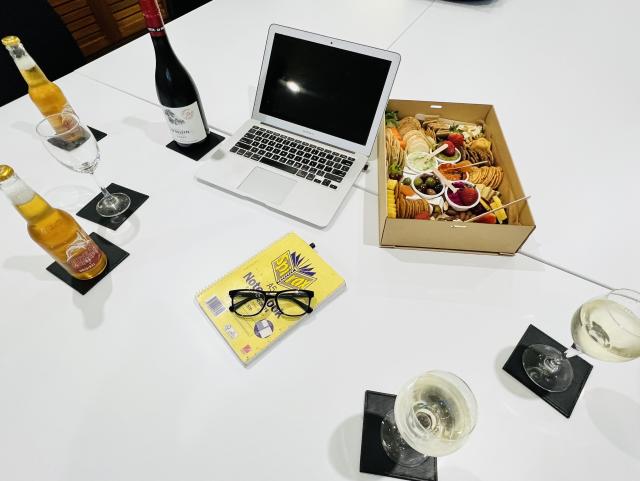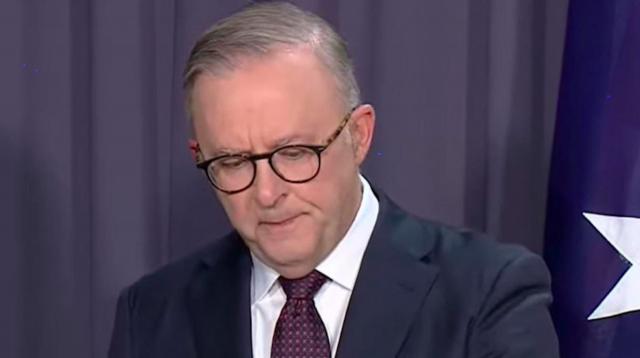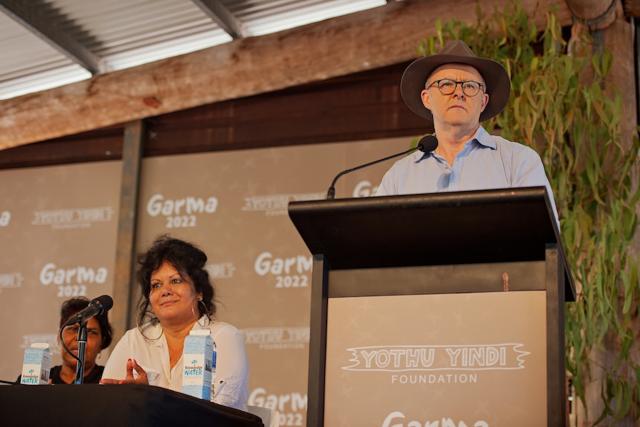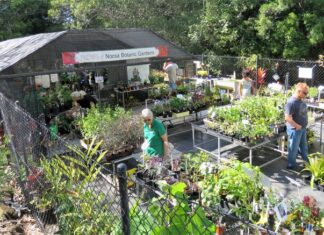Precede
PHIL JARRATT and a small circle of Friday arvo swillers discuss the consequences of the decisive vote against the Indigenous Voice to Parliament. (No prizes for guessing how the panel voted.)
First Bloke: Listening to No voters at the polls I kept hearing that, “they don’t want it in the Territory”. I think this was a major deciding factor for the undecided, the notion that Aboriginal people did not want this. It was a bald-faced lie, of course, but I wonder how many people who voted no because they believed stuff like that actually looked at the vote in the remote communities. Wherever, the First Nations’ vote was predominant, it was hugely for Yes.
First Lady: Even looking at it by regions in the NT, in the booths where there was a significant percentage of First Nations, the Yes vote was well in the majority.
Ringleader: Most First Nations leaders in the Yes campaign were adamant from the start that it had the support of 80 per cent. Is that what you’re seeing from the remote vote?
Second Lady: Yes, very much so. The Guardian separated the booths and it was very clear for yes, mostly around 80 per cent. I think the direction of where to now has to be driven by First Nations people, but personally I’m grappling with what we can do. Yes, there were lies, yes there were opportunities to fact-check but people didn’t. That notion of voice, treaty, truth, how do we get Australians to address that again?
Ringleader: When you mention voice, treaty, truth, it struck me as odd that nowhere in the Yes campaign did I hear reference to the fact that the states have been working towards those goals quite successfully since the Uluru Statement. In fact, in the ACT where it’s already very advanced the vote was a no-brainer for Yes.
SL: Yes, and South Australia paused their effort in the same direction so that it wouldn’t make the Federal waters murky, I suppose.
Ringleader: The Guardian has been following up this week with a state by state update on what will happen to their processes now, and it’s mainly good news, but the problem now is that already Queensland is looking dodgy in its commitment and NSW is faltering too.
Second Bloke: It’s a setback for sure and it says a lot about the political process and misinformation and how we’re going to deal with that in the future.
SL: I think we’ve missed out on an opportunity to stand side by side with First Nations people and start to become a more forward-thinking and more generous nation, but we’ve always been timid and scared, taking too much for granted. I know what a corrupt government looks like, and we don’t have one, so we should value it and do our homework on the important issues. I found that during the campaign you could sit down with people and if they had an open mind you could explain what was asked and what the benefits would be, and they would mostly say, oh that seems fair enough. I didn’t find the same thing at the booths, because by the time they got there, people were on a mission.
Ringleader: I don’t want to believe that 60 per cent of Australians are racist. I think that there may have been an element of ingrained racism in some decision-making, but the lies they were told gave them license to vote no with a clear conscience.
SB: That element was pretty clear in the discourse, in statements like, “I’ve lived with them.” What do you mean? “Oh, I lived with them for a month.” And you wonder, who is them?
FL: I had spat at me, “Have you been there?” I asked where, but these people were going past on their hate train and they just shouted back, “You obviously haven’t been there!”
Ringleader: I suppose there’s a “them” and they come from “there”. That would explain it.
SL: I think the whole No campaign encouraged ignorance: If you don’t know, vote no. And somehow this made the Yes campaign the voice of division.
Ringleader: Which in electioneering terms was bloody brilliant, because it was exactly what it wasn’t.
SL: But it played to the idea that we’re all the same, and I think that goes back to the ideas behind assimilation. Take Noosa, for example. Here First Nations people and culture is almost nowhere to be found. Noosa Council built the Peregian Community Centre, which is a beautiful building, close to Emu Mountain, close to midden sites at the beach, close to Mt Coolum, all these connections that made it ideal to use as a First Nations art gallery, a place to tell the story. At least Tourism Noosa has created a welcome to country at their information centre. But again, this is for First Nations themselves to decide.
Ringleader: To go back to a point I raised earlier about how far down the track the states have travelled since the Uluru Statement, do you think this could have been used better by the Yes campaign?
SB: It’s a complex layering at state level because they deal with land issues, so just like what happened in 1994 when native title came on the program, you’re going to get noise like they’re going to take my land away. That was heard to a degree in this campaign which is probably why Yes didn’t run more on the progress of the states. You can explain how land rights works, of course, but people aren’t looking for complexity. They want slogans.
FL: The information that was given to Yes campaigners emphasised be positive and keep the message simple, don’t engage with hard Nos. I don’t think you could say it was passive but the emphasis was on simplicity. At the start of the campaign I found that mostly we were explaining what the referendum was. I don’t think you could have a discussion about Lydia Thorpe in those situations.
SL: I think we have to keep in mind that 40 per cent of Australians voted yes to a really decent proposition, and what we found in Noosa was an amazing group of people who put their hands up to help with the campaign. That group won’t go away and will be a strong resource for the future. I don’t think that existed in the same way before the Yes campaign, when there was a lot of silence on these issues, perhaps out of respect to the Kabi Kabi people, who had yet to voice their own opinions.
SB: I think some Kabi Kabi came forward, but a lot stayed on the side. As people I’ve spoken to have said, this was not a new thing. They’d been let down by government numerous times. They know there are good people out there, but there’s also an element of distrust, of caution.
FL: To be honest, I feel like we’ve been used by this whole campaign, which had far more to do with positioning ahead of the next Federal election than it did with First Nations issues. I feel they’ve used our hearts and souls and the majority of Australians have fallen for it. The proof is that 75 per cent of Australians supported Yes until the No campaign kicked in.
SL: I don’t think it was simply that, but you are right in seeing this as a test run for Trumpian campaigning with its slogans and lies.
FL: Do we have any information on the youth vote?
SB: Well, Briggs, the rapper, put some life into it right at the end with his conversation with two young girls. “What was the last thing you Googled?” (Laughter).
FL: The reason I bring that up is we need to get them fired up. I don’t know why they’re not angrier. We need activism from them, we need to get the Teals and the other independents on side.
SB: I think one of the reasons that youth don’t speak out more is they’re not part of the major demographic, and it’s easier to speak up when you’re part of the big mob, like at the football.
FB: One of the things that concerns me about the future is that maybe we’ll no longer have the acknowledgement and welcome to country.
FL: Well, I think there’s been some aggressive pushback about that for some time.
SL: I don’t have to be welcomed to my own country is a common response.
Ringleader: I get that some people will be offended, either quietly or noisily, but it’s been embraced by so many of our institutions now, do we really think a 60/40 No vote is going to wind back the clock that much?
FB: Yes, I do, because the agenda is assimilation now. We are one people now.
SB: If we’re going to get dystopian about the future, 15 years ago it was John Howard doing the intervention, and now it might be Jacinta Nampijinpa Price saying the kids aren’t safe here, we’re moving you to Alice Springs.
Ringleader: I wonder how many families have divided over this campaign.
SL: I know that most of my family voted No and I don’t know how to talk to them, to find my way back to them.
FL: In our family the Yes campaign actually drew us together. We were able to discuss all these big ideas in a positive way with our kids and my mum in a way we’d never done before. But that was before the vote.
SB: I think if you feel let down by the democratic process then you’ve got maybe 1/100th of a taste of what Aboriginal people have been suffering their whole lives.
FB: I agree and I think we need to hold onto that feeling and keep it with us.
SB: Keep our stickers and our Yes shirts and just keep going.
FB: Maybe the message is, 40 per cent of us are with you, and we’re not going to give up. We lost a battle, not the war.
SL: I think of how much Australians revere Anzac Day, which was an event of great loss. I’m wondering if 14 October might become a moment of great loss that we turned around, and made it the moment everything changed. The Uluru Statement From The Heart was a magnificent statement of holding out a hand. We can’t lose that.
FB: And 40 per cent of Australia has taken that hand.










